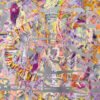Chris Impey is a University Distinguished Professor of Astronomy at the University of Arizona. He has over 180 refereed publications on observational cosmology, galaxies, and quasars, and his research has been supported by $20 million in NASA and NSF grants. He has won eleven teaching awards, and has taught three massive open online classes with over 180,000 enrolled. Impey is a past Vice President of the American Astronomical Society and he has been an NSF Distinguished Teaching Scholar, Carnegie Council’s Arizona Professor of the Year, and most recently, a Howard Hughes Medical Institute Professor. He’s written over 70 popular articles on cosmology and astrobiology, two introductory textbooks, a novel called ‘Shadow World’, and eight popular science books: ‘The Living Cosmos’, ‘How It Ends’, ‘Talking About Life’, ‘How It Began’, ‘Dreams of Other Worlds’, ‘Humble Before the Void’, ‘Beyond: The Future of Space Travel’, and ‘Einstein’s Monsters: The Life and Times of Black Holes’.








